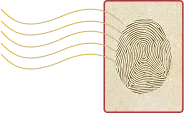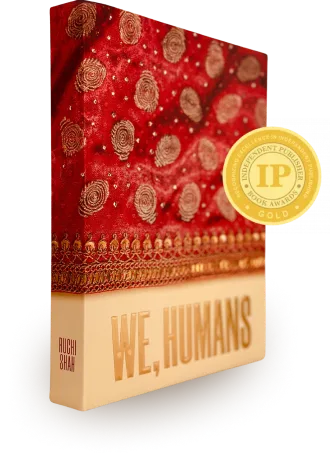
We won!
Outstanding Craftsmanship Award
IPPY Awards 2025 - Gold

We, Humans®
Strikingly display-able
On-the-go, me-time
Shareable giftable chapters
Usable micro-wisdoms
"It'd be a stretch to call it therapy in a box, but it is something like that."
A book with usable wisdoms on how to human, with ease.
A book with no rules: shuffle, read, share, display, gift.
A book that is a ritual for inner wellness.
A book where you can start where you are,
choose what you want, grow what you have.
Modeled on how we seek answers on our humanness in daily life,
the book nudges us to google inwards, to chatgpt inwards,
and build our own inner intelligence.
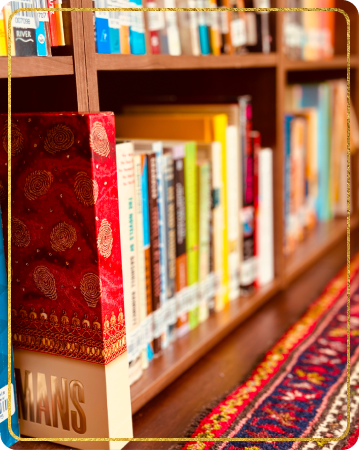
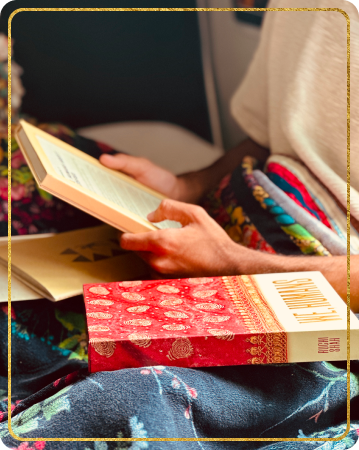
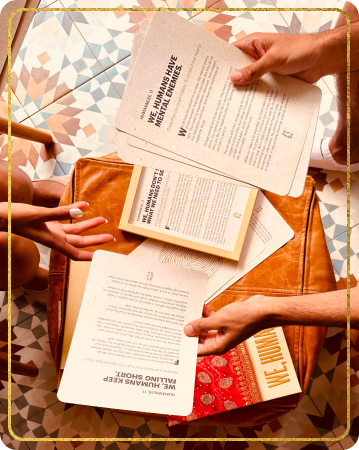
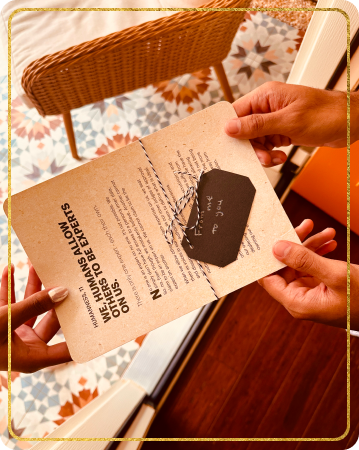
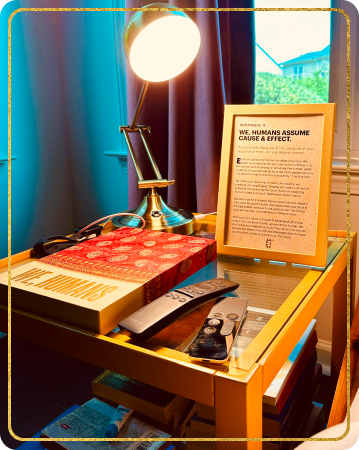

“I love the concept of Fear Pollutants. And I really like that you can choose to let them go.”
“I absolutely love it 😍. I want to read it all.”
“I love the weather analogy. I find it 100% relatable.”
“Love the cover and the language, stance, substance, aim of what’s brewing in there!”
“I have been through decades of therapy and what you shared with me in 20 minutes was very helpful than all of the therapy I’ve ever received.”
About the Author - Ruchi Shah

Ruchi Shah is a US-based Industrial-Organizational (I-O) Psychologist. Her work, spanning 20+ years, includes psychometric assessments, leadership development, and coaching. The unifying theme of her expertise is her ability to distill the complex principles of humanness into practical, actionable insights.
About the Book
Ever experienced a DIY self-help book before?
Where you build your book, and build your experience.
And read as little as you want and only what you desire.
You can randomly choose chapters and build your own experience; read as little as you want and only what you desire.
- A priming booklet guides the reader towards ease, including what is known, tried, tested and useful, spotlighting the underlying science.
- A foldable easel case holds 35 non-bound, single-card chapters for a novel user-experience through bite-sized content, appealing to readers and non-readers.
The Story Behind...

The Story Behind...
the inception.
The Story Behind...
the inception.
“Tell me more about the book. How did you get this idea?”
I’ve had many labels. One of the most burdensome to carry was – over-sensitive.
Determinedly, I spent more than four decades of my life trying to ‘change’ it, ’fix’ it, ‘understand’ it, and ‘accept’ it. As a human behavior specialist, I collected, tried, and tested a considerably large toolkit, always finding new ways to treat my “oversensitivity”.
In one of those existential mid-life stock-taking inventory-taking moments, I realized. Why am I disowning it? There is value in this label – I have a natural radar for humanness.
Then. I allowed oversensitive as a part of me. I struck gold.
Not knowing what to do with my newfound gold, I started writing about it. A chapter shaped. Then I got stuck. Again, a chapter shaped. In a podcast one day, I heard that this stuck-flow-stuck-flow pattern of writing is what happens to authors. This is how the idea of We, Humans® as a book was born.
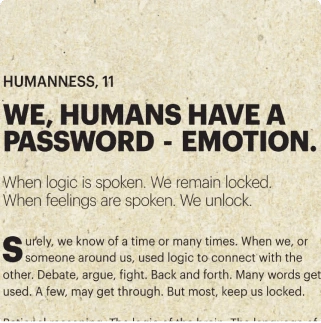
The Story Behind...
the writing style.
The Story Behind...
the writing style.
Once my personal conflict on labels settled, I was able to step outside myself. It was the year after the pandemic and the volume on wellness had turned up.
I instantly noticed that my upheavals and my quests were many’s. I, human was We, humans.
Maybe this is normal? Maybe this is common? Maybe my gold is our gold?
These questions set the humanness writing style. The vibe is allowing, accepting, normalizing, and commonalizing. The tone is conversational, kind, non-wordy, non-preachy, non-shaming, non-rushed, and ease-filled. The gift is articulated insights and customizable nudges.
The underlying presumption is – we already know. Yet sometimes, it benefits us to spotlight what we know.
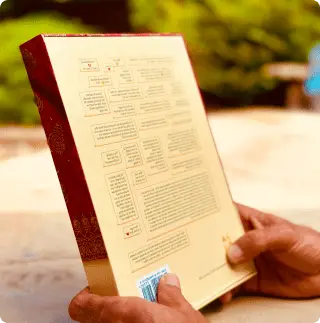
The Story Behind...
the vetting.
The Story Behind...
the vetting.
Troubled by self-doubt about my voice, my insights, and the end use of the We, Humans book, I often shared my chapters as I wrote with varying groups of people — varying ages, genders, occupations, countries, and personal issues.
It took a lot of validation before I felt convinced that the gold I had stumbled upon was the gold that others were seeking too.
Unknowingly, to me or to them, our text exchanges turned into a vetting process.
Now our circle of vetters is an ever-increasing circle of humans. Uncles, aunts, friends, children, elders, peers, well-wishers, coaches, coachees, airport co-travelers, strangers, students, other authors, and publishing-business advisors.It is beginning to match what a We, Humans sample group would look like.
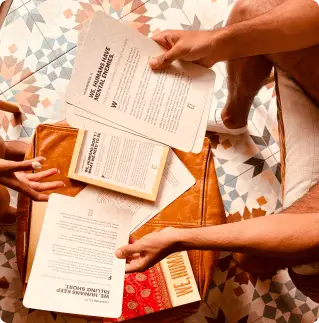
The Story Behind...
why not digital?
The Story Behind...
why not digital?
A kinesthetic experience has a grounding, slowing, settling, and soothing impact on our nerves. This allows us to feel psychologically safe and secure. The book’s operations – opening the box, unfolding the stand, and choosing from loose chapters support the kinesthetic experience.
A sensory experience increases our awareness and attention, bringing us into the here and now. This allows us to shift from a reactive state to a more responsive state. The book’s visuals, textures, and kindle-like sliding of chapters support the sensory experience.
A play experience releases stress, softens our defenses, and increases our receptivity. The book’s loose chapters, just like conversation cards, allow people to read together, interact, and articulate their humanness. The easy sharing and meaningful gifting support the play experience.
An aesthetic experience invokes pleasure, allowing a mini-escape from practicalities. The use of gold is a reminder of our grand preciousness. The book and the stand as coffee-table displays support the aesthetic experience.
These are some reasons why We, Humans is non-digital.

The Story Behind...
the binding.
The Story Behind...
the binding.
The loose chapters, the center-stitch thread binding, the cover image of embroidered cloth, the use of natural red color, and the unfolding of the cover to reveal the We, Humans® book.
These key design elements are styled based on the ‘pothi’ bookbinding technique used for ancient scriptures and manuscripts. The image provides an example of a ‘pothi’.
Traditionally, these design elements served the crucial function of protecting the contents from wear and tear, ensuring the longevity of the knowledge shared. Additionally, the use of gold, silk cloth, or tassels added preciousness, subconsciously nudging the user for careful handling and lengthened preservation of the contents.
Our design is inspired by these elements.

The Story Behind...
the stand.
The Story Behind...
the stand.
The loose chapters in the We, Humans® book are encased in a cardboard box that can be converted into an easel stand.
This key design element is styled based on the prayer book stand/lectern used in ancient times. The image provides an example of a ‘rehal’.
The stand used to be made from the finest wood and elevated the sacred readings above floor level.
It was also designed to collapse into a flat form for portability and storage when not in use.
Additionally, since prayer books were often heavy, placing them on the stand made for easy handling of the loose contents and allowed for longer reading time or meditative contemplation.
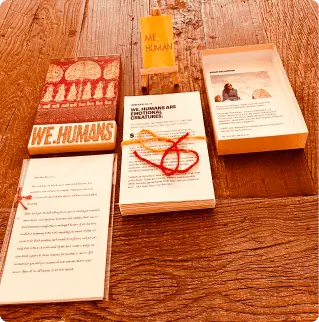
The Story Behind...
the prototype.
The Story Behind...
the prototype.
The first prototype of We, Humans® was created using a cardboard jewelry box, seed paper, an easel from Amazon, a free image of a 19th-century temple-hanging fabric housed in the Boston Museum of Fine Arts, golden letters from a craft shop, and red sacred thread from our closet drawers.
The design elements’ intention was to communicate that humanness is precious, and so are any conversations related to it. The image provides a preview of the prototype.
Evoking a unanimous ‘wow’ from all those asked to give feedback, it became evident that book design was born.
It was much later in the production process that we realized the difficulty in re-creating a marketable version of this book design. But we stuck to it.

The Story Behind...
the team.
The Story Behind...
the team.
Any self-publisher will say – it takes a village to raise a book. We, Humans®, is no different. And it is what it is with the contributions of others.
With the editor in Aditi Shukla Fozdar, the book found a co-believer and a co-champion. With her personal search for humanness gold, the book found a committed user. With her experiences in the publishing world, the book found its solid footing. We, Humans® book is decidedly more because of Aditi.
Along with the publishing and business team, the book is supported by a book design and print team, a tech team, many well-wishers, and early buyers. We invite you to be a part of our support team!
We, Humans® is for...
Join Humanness.ing on Social
Allow us to add our understanding of humanness to yours.


